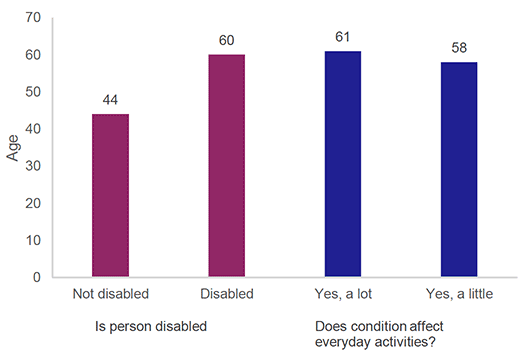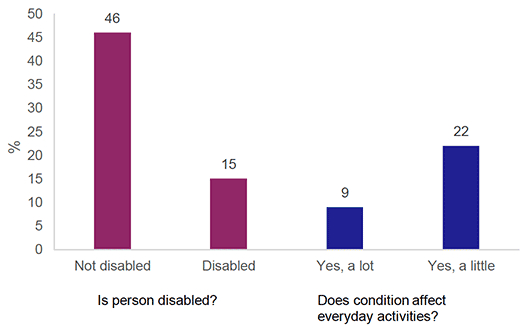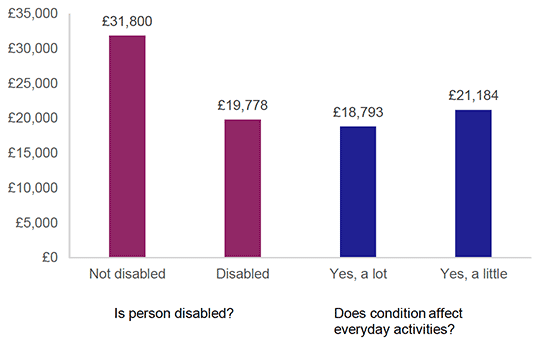Demographic characteristics of disabled people in the survey
Demographic characteristics of disabled people in the survey
Overview
As well as the particular issues relating to how their disability affects travel, disabled people's travel will be affected by factors such as age, employment status, and income. There are substantial differences between the disabled and non-disabled population for these three particular factors.
Our analysis for this publication generally does not control for these differences. This is a potential area for future analysis.
Whether someone lives in an urban or rural location will also affect travel, although the same proportion of disabled and non-disabled people live in urban areas.
Age
The Transport and Travel in Scotland statistics publication, which summarises transport findings from the Scottish Household Survey, shows that beyond the age of 60, people start to travel less frequently and become less likely to drive.
Disabled people are, on average, noticeably older than those who are not disabled (median age 60 compared to 44). [Figure 1] Fewer disabled people will be of working age, which will affect travel patterns.
There is much less difference in age between those whose condition reduces their ability to carry out day-to-day tasks a lot and those whose condition does not (61 to 58). [Figure 1]

For most conditions, average age is greater than for the non-disabled population, although those with learning or behavioural problems (30) and dyslexia (40) are younger. The oldest median ages are for people with hearing difficulties (73), difficulty seeing (70), heart, blood pressure or circulation problems (69) and arthritis (68).
Employment status
People in full-time employment are more likely to make commuting journeys (certainly prior to the COVID-19 pandemic), and are more likely to be able to afford a car.
Disabled people are only around a third as likely to have a job as a full-time employee as those who are not disabled (15% compared to 46%). [Figure 2]
Those whose condition affects day-to-day activities a lot are far less likely to be a full-time employee than those whose activities are affected a little (9% compared to 22%). [Figure 2]

Full-time employment is lowest for people with a speech impairment (1%), difficulty seeing (5%), difficulty hearing (5%) and learning or behavioural problems (7%).
Household income
The Transport and Travel in Scotland publication shows that people from higher income households are more likely to have a driving licence and to drive.
Average household incomes for disabled people tend to be lower than for those who are not (median £19,778 compared to £31,800). [Figure 3]
Those whose condition affects their ability to carry out activities a lot have lower household incomes than those whose condition affects everyday activities a little (£18,793 compared to £21,184). [Figure 3]
For all conditions, household incomes of disabled people are noticeably lower than for those who are not disabled. Average household incomes are lowest for people with mental health problems (£16,861). Those with severe disfigurement, skin conditions or allergies have higher average household incomes than any of the other types of condition (£20,488).
The income figures presented here are adjusted to 2019 prices using the Retail Price Index.

Urban or rural location
The proportion of disabled and non-disabled people living in urban areas was equal at 83%.